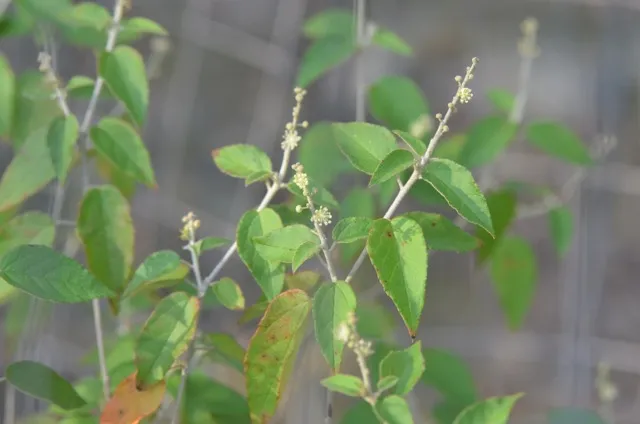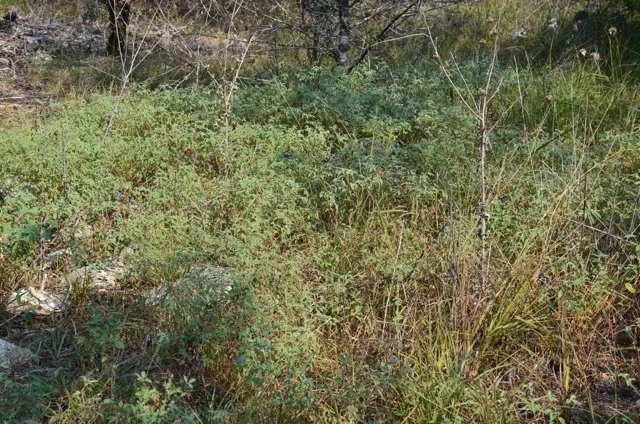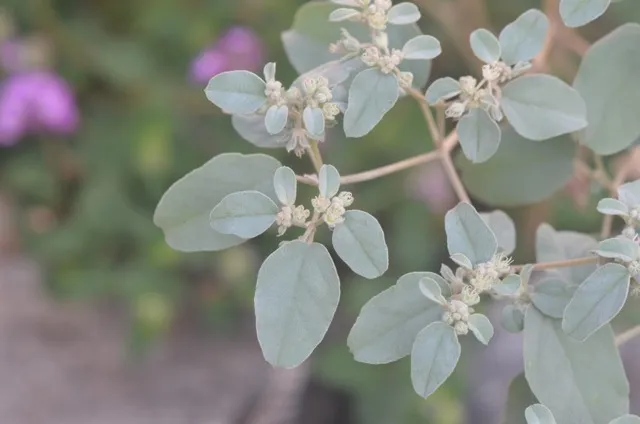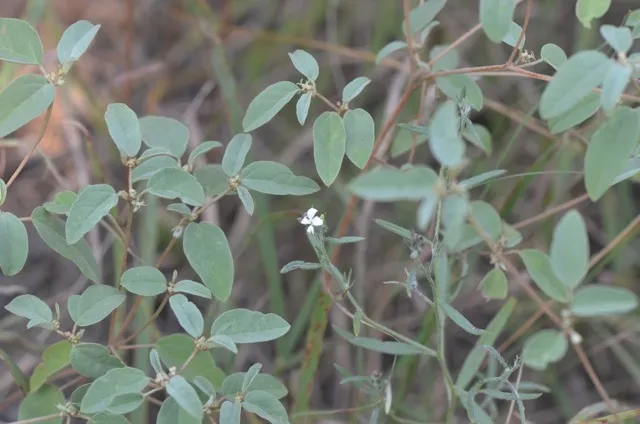By Delmar Cain
A few weeks ago while I was taking the dogs for a walk, a neighbor, Sandy Alvarez, stopped her car, directed my attention to the area beyond the county right of way and asked me if I knew the name of “that plant”. She said that the plant was plentiful outside the mowing area of her lot and she thought it was very attractive. The plant to which she was referring was growing in abundance in the sunny areas and outside the shade of the trees in our subdivision.

Having enjoyed the sport of bird hunting at one time and having had many discussions about game food plants on such hunts, I recognized the plant to which she was pointing. So I casually answered, “That’s doveweed.” It was only after she drove away that I began to have some nagging doubt about the correctness of my answer.
A few days later I sat down at the computer and did a search on “doveweed”. My search gave me a bit of a shock, since the plant that I had identified for Sandy was not the same plant that I found as “doveweed” in the USDA Plant Database. The “doveweed” in the Database, Croton setigerus, is not even a Texas plant and is found only from Arizona and Utah west to the Pacific Coast. In addition there were 51 species of croton in the United States with 25 species in Texas alone.

I could understand that two plants in different areas might have the same common name, but I found it strange that our local doveweed did not come up in the search. So I went to the Texas Parks and Wildlife plant database, which lists plants beneficial for wildlife. I found no doveweed. But I did find “croton species”, which I thought was the family to which our doveweed belonged. Unfortunately the photo was “pending”.
However, the description seemed to fit– an annual forb, which is drought tolerant, flowering in June-August and fruiting in July-September, just in time for migrating doves. It grows on a variety of soils over most regions of Texas and prefers sunny areas where few other plants are present. It is an important seed source for doves, quail, songbirds and rodents. It provides some cover and is even browsed by deer.
A third internet search led me to the LBJ Wildflower site, which yielded another plant with the common name of doveweed, (Croton texensis) also called Texas croton. But Croton texensis, although it is found in most of the states in the middle U. S. and in some central Texas counties, is more generally found in the Panhandle area of Texas. Again this was not the plant that I had identified as doveweed to my neighbor.

But while checking on the other croton species on the LBJ Wildflower site, I found an image of what I had been calling “doveweed”. The plant was listed as prairie tea or one-seeded croton (Croton monanthogynus), a member of the Spurge Family. Also an annual, it is native to the middle and eastern United States and prefers a calcareous soil or a dry prairie. It is found in many counties in Texas and particularly those counties in Central Texas. It has an inconspicuous white flower, but its seeds are an important dove and quail food.
To check my research I looked at the plants in our area again. Sure enough the fruit contained only one seed. The prolific plants that we see here in the sunny areas are indeed Croton monanthogynus. This year the conditions for growing were perfect for this plant. There was just enough rainfall to allow it to recover from the dry spells as the summer progressed. The doves will be fat this year.
Soon after I found a croton growing in the flowerbed near our front door. When I checked the fruit pod, it had three seeds—it is not prairie tea. I think that it is threeseed croton (Croton lindheimerianus), but I am going to check further. Thirty feet away under a tree was another croton—bush croton also known as encinilla and hierba loca (Croton fruticulosus). But the next time before acting like a smart guy and informing a questioner about the identity of a plant, I will think twice before relying on hunting lore. I will leave myself wiggle room.

Now I will have to go tell Sandy Alvarez that the plant she asked me about, although it provides food for doves is not doveweed—it’s prairie tea. I wonder how many plants are called prairie tea. I am a slow learner, but I am beginning to think that these scientific names are worth the trouble.
Don’t miss out on an opportunity to see quality presentations on plant communities in the Edwards Plateau, ecosystems management, Hill Country hydrogeology, sustaining biodiversity through native plants and many others with only a short drive to Kerrville. Check out the Annual NPSOT Symposium in Kerrville, October 4-7 at the YO Ranch Hotel. You can find a schedule of events and presentations on the state NPSOT website. I know that you will find either a field trip or a presentation that you would enjoy.
The next meeting of the Boerne Chapter of NPSOT will be held on October 2nd at 6:30 PM at the Patrick Heath Library—not the Cibolo Nature Center. Our speaker for the evening is Mark Moseley, an Ecological Site Inventory Specialist for the NRCS, who will be telling us why the plants in our area grow in our area. I am sure it will be an interesting meeting.
